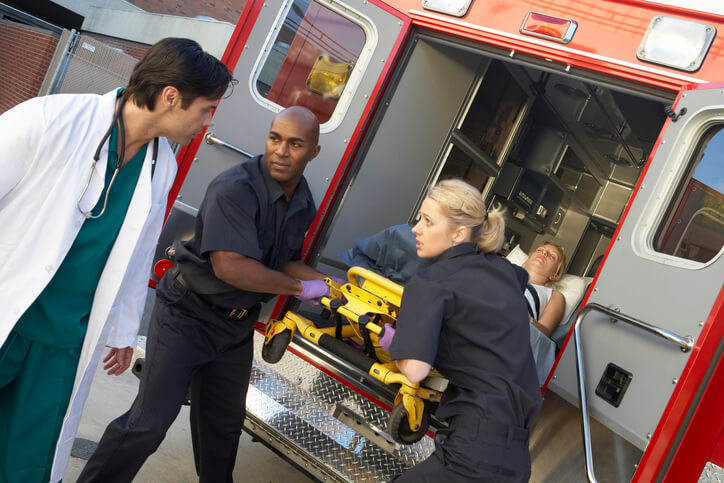
As you approach your patient, you hear him snoring and notice the familiar sound of gurgling coming from his mouth. You immediately know you will be working to manage his airway—all within seconds of looking at, listening to, speaking with, and touching the patient. Remember: The first few seconds when you approach your patient will likely give you the most clinical information about your patient’s condition, bombarding you with information rapidly, sometimes instantaneously.
Your initial assessment and primary survey are your first actions, but your full assessment skills are necessary to determine the swiftest and most appropriate care for your patient experiencing an airway emergency. When it comes to airway management, few would argue the importance of your suction unit and your skills in medical suctioning.
Developing and mastering these techniques takes time and consistent exposure to various situations that require different emergency care and action. Let’s explore a few of these to provide you and your team with some training scenarios to improve your medical suction skills and patient outcomes.
Keep in mind that these scenarios will require more than what is outlined here, but we will focus on the importance of medical suctioning in order to establish and maintain airway patency.
Scenario #1: Acute intoxication
You arrive at a crowded local bar and see your patient lying supine on a bench outside. Your rapid primary survey reveals the patient has shallow and slow breathing and is only responsive to painful stimuli. You and your partner swiftly move the patient onto the gurney and she begins to retch and vomit—a lot.
Now, not only are you concerned about the patient’s inability to protect her airway because of intoxication, but you are also dealing with a large amount of airway contaminants that could easily cause aspiration pneumonia. Maneuvering your patient into a High Fowler’s position, quickly grab your large bore, rigid suction catheter and suction unit to remove the vomit.
Using a disposable suction catheter that is specifically designed to remove large amounts of contaminants from your patient’s airway is key. Next, depending on your patient’s ability to protect her airway, you can determine if the patient requires intubation. Constantly removing the contaminants significantly decreases the chance that your patient may develop aspiration pneumonia, a life-threatening complication of aspiration.
Scenario #2: Pediatric respiratory distress
You respond to a call reporting a 4-year-old child having difficulty breathing. As you approach the child, you see him in a tripod position on the couch and notice a large amount of drool coming from his mouth. He appears ill, irritable, and lethargic.
Few things will get your adrenaline going like a child in respiratory distress. You must be able to maintain your cool in the face of the increased stress that a child’s emergency will cause. You are likely also dealing with the child’s concerned parent or adult caregiver, and your demeanor and calm approach will help to decrease their fear and stress, as well. Your pediatric assessment skills will help you maintain a calm approach to caring for your patient.
Adequate and efficient suctioning is necessary here to clear the child’s airway of the copious secretions and decrease his respiratory distress. Use a portable suction unit that allows you to easily adjust suction pressure for your pediatric patients, and be sure to use a suction tip with a large inner diameter that is rapid and efficient in suctioning the secretions from your patient’s airway.
Scenario #3: Trauma
You are dispatched to a call involving a pedestrian versus a vehicle. You see that the patient is lying prone on the sidewalk with visible blood pooling around him. As you approach, you hear your patient taking infrequent respirations, and the patient sounds like he is snoring.
Large airway contaminants combined with ineffective breathing and airway compromise require you to rapidly secure an artificial airway to ensure airway patency.
An improved and unique technique called Suction Assisted Laryngoscopy and Airway Decontamination (SALAD) is now available. This technique uses constant suction, provided by the SSCOR SDC Catheter™,(Formerly the SSCOR DuCanto Catheter®), in the upper airway. The suction continuously removes vomit, blood, and other materials, around which the practitioner intubates the patient via either direct or video laryngoscopy.
The SSCOR SDC Catheter was developed with both routine and emergency airway management in mind. It is shaped to fit the oropharyngeal anatomy and has a larger internal diameter, making it significantly less likely to clog. This hyper-curved catheter is shaped more like a patient's airway, making it easy to position the catheter. Using this catheter when faced with a trauma patient and copious airway contaminants will allow you to quickly and efficiently secure the patient’s airway.
Train for Improved Medical Suction Technique
The reality is that experience is everything in EMS. Expose yourself to as much training as possible in order to best prepare yourself for the unexpected. Improving your medical suction techniques will not only increase your efficiency but can also be life or death for your patient.
Editor's Note: This blog was originally published in May, 2019. It has been re-published with additional up to date content.
















